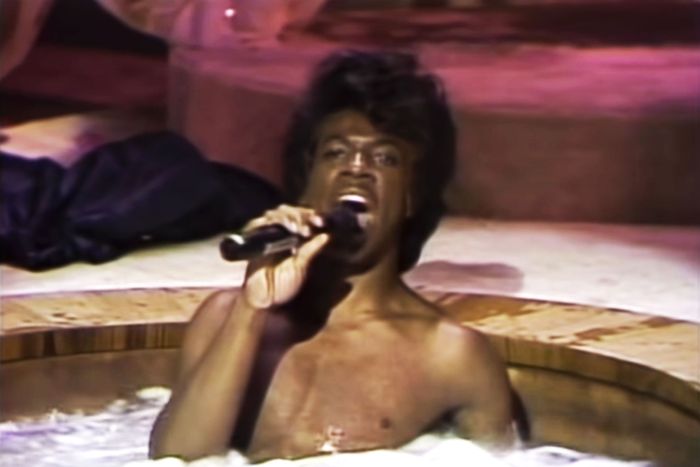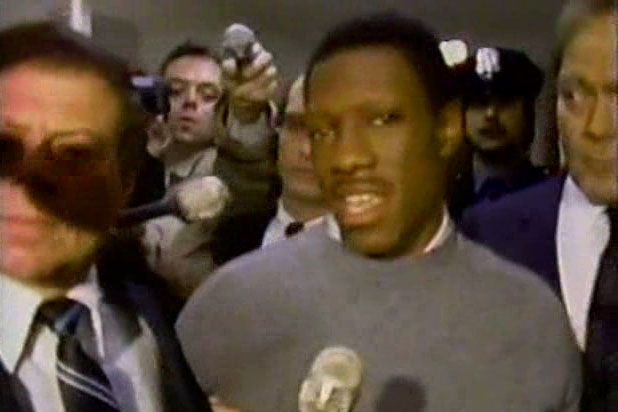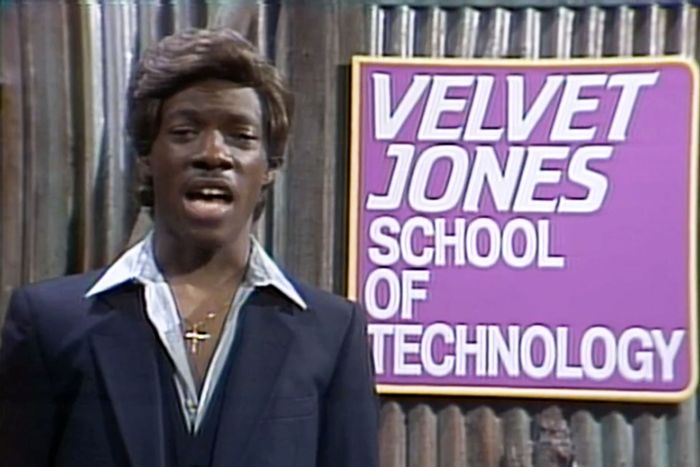
The news that Eddie Murphy is hosting an episode of Saturday Night Live this season and returning to stand-up has comedy fans of a certain age breathless with anticipation. By “a certain age,” I mean someone over 50. This is not a slight against Murphy or his level of celebrity. It’s just that a confluence of the passage of time, the circumstances of Murphy’s tenure on the show, and his hesitancy to return to host again has rendered his work on Saturday Night Live more obscure than it should be.
The era of SNL that Murphy lorded over was tumultuous at best. Dick Ebersol had taken over as the producer from Jean Doumanian, who had the unenviable task of trying to reboot the show after the departure of Lorne Michaels. The cast around Murphy was talented, but full of names that faded into obscurity or became famous for work outside Studio 8H. Robin Duke, Tony Rosato, and Gary Kroeger are names known to SNL obsessives and sketch-comedy completists. Julia Louis-Dreyfus came and went, then took off on Seinfeld. Tim Kazurinsky is a name you might recall as the actor who played “Sweetchuck” in Police Academy. Joe Piscopo is best known for being a resident of New Jersey.
In short, there’s a reason you haven’t seen much of Eddie Murphy’s work on Saturday Night Live. Besides the sketches Murphy was in, the show kind of stunk. He was so crucial, so powerful, and so undeniable on SNL that instead of padding the show with extra material in case the show ran short, Ebersol would just send Eddie out in front of the crowd to ad lib on live TV. He’s also the only cast member who’s ever hosted the show while being an active member of the cast, when he filled in for Nick Nolte in 1982.
In lieu of combing through the four Murphy-led seasons, we’ve compiled a list of some of his best sketches to prepare you for his triumphant return.
James Brown’s Celebrity Hot Tub Party
If there’s a joke to be had in “James Brown’s Celebrity Hot Tub Party,” it’s that there’s really no joke. Nothing much happens, save for Murphy’s only mildly committed James Brown impression. In a way, this was a direct progenitor of Kenan Thompson’s “What Up With That?” recurring sketch: a series of escalating musical absurdities in lieu of the talk-show premise you’ve been promised.
That said, there’s plenty of pyrotechnics to keep your attention. He dances, sings, and mugs for the camera, but what sticks with you is Murphy’s knowing smile. He gets that this is a completely ridiculous premise that goes nowhere, but he’s having fun anyway. His obvious joy at getting to play pretend R&B star is completely and utterly disarming. This is one of many SNL moments where Murphy carries a thin premise on star power alone. It’s not memorable because it’s clever. It’s memorable because it’s Eddie Murphy.
Buckwheat Dead: America Mourns
Today, SNL isn’t known for running jokes that carry from sketch to sketch. Each piece exists on an island, designed to be enjoyed by someone flopping on the couch after a night out or a person aimlessly rummaging through YouTube. Whether it was due to the change in producers or the fact that the show was in danger of losing its place in the pop-culture zeitgeist, the Eddie Murphy era of SNL took chances with the form. The death of Buckwheat was a runner that lasted through the March 19, 1983 episode and into the following week, taking the form of news bulletins hosted by Joe Piscopo as Nightline host Ted Koppel.
Ostensibly a parody of America’s fascination with celebrity and the macabre, Murphy’s immensely popular recurring character, an adult Buckwheat from The Little Rascals, is murdered. Eddie plays both Buckwheat and his assassin, John David Stutts, who is also murdered on the next episode. Both daring and hilariously dark, the Buckwheat saga is one of the rare sketches from this era that would fit comfortably next to anything from the first five years of SNL. (Watch it here.)
Mister Robinson’s Neighborhood
As the only African-American cast member on Saturday Night Live at the time, Murphy had both the burden and the opportunity to be the show’s standard-bearer for the entire culture. “Mister Robinson’s Neighborhood,” a parody of Mister Rogers’ Neighborhood, was likely one of the only windows many Americans had into a black world. The first appearance of Mr. Robinson was on the February 21, 1981 episode, which is infamous for being the episode where the late Charles Rocket said “fuck” on live TV and ensured he would be let go when Ebersol took over SNL from Doumanian.
Instead of teaching kids about manners and kindness, Mr. Robinson schools his viewers on the harsh realities of getting by in the inner city — drug deals, theft, unpaid bills, and the ever-present threat of violence. Yes, this is comedy. Its ability to mine racial injustice for laughs makes Mr. Robinson (and “urban” movie reviewer character Raheem Abdul Muhammad) resemble a sketch from In Living Color more than anything you’d usually see on SNL.
The Gumby Story
Like Buckwheat, Murphy’s impression of beloved children’s character Gumby was both wildly popular and completely irritating. That could be said of many of SNL’s recurring characters from the past. They capture the public imagination and then ossify into dull catchphrase machines designed to sell T-shirts at Spencer’s Gifts. Murphy’s Gumby — the claymation hero reimagined as a salty New York showbiz castoff — was a sensation. In what’s perhaps the best Gumby sketch, Gumby directs his own biopic, smoothing out the edges of his life and presenting himself as a plucky romantic hero rather than a surly comedian perpetually chomping on a cigar. The “Gumby” sketches might not have been brilliant comedy, but they showed audiences that Murphy could disappear into a role, both with accents and impressions, but also in layers of makeup and costume trickery — a preview of things to come in his career.
Velvet Jones
I hate that I love Velvet Jones. It’s easy to look at this recurring character — a slow-witted pimp selling how-to books on becoming a sex worker — as an anachronistic, misogynistic bit of garbage that should be buried in the same desert where Atari left all those extra copies of the E.T. video game. And yet … I laugh every time he says, “Hi, I’m Velvet Jones.”
In the span of three months, Velvet Jones was on SNL four times. Eddie Murphy doing a funny voice and alluding to prostitution was good enough in 1981. And 1982, when the character was retired. And 1983, when he was brought back to sell a porno tape masquerading as an exercise video. Murphy was so famous that all you had to do was put a wig on him and you had a successful TV show. (Watch it here.)
White Like Me
Where sketches like “Velvet Jones” or “Gumby” are relatively toothless on the page, the very idea of this pre-taped short film from the December 15, 1984 episode remains incendiary. In a precursor to his work in whiteface in Coming to America, Murphy plays himself going undercover as a white person for a day. His whole life becomes different. He’s given newspapers for free, his bus commute turns into a party, and his boss treats him like an old country-club chum. From Dave Chappelle to the Wayans brothers, “White Like Me” influenced the way generations of comedians talk about the racial divide in America.



